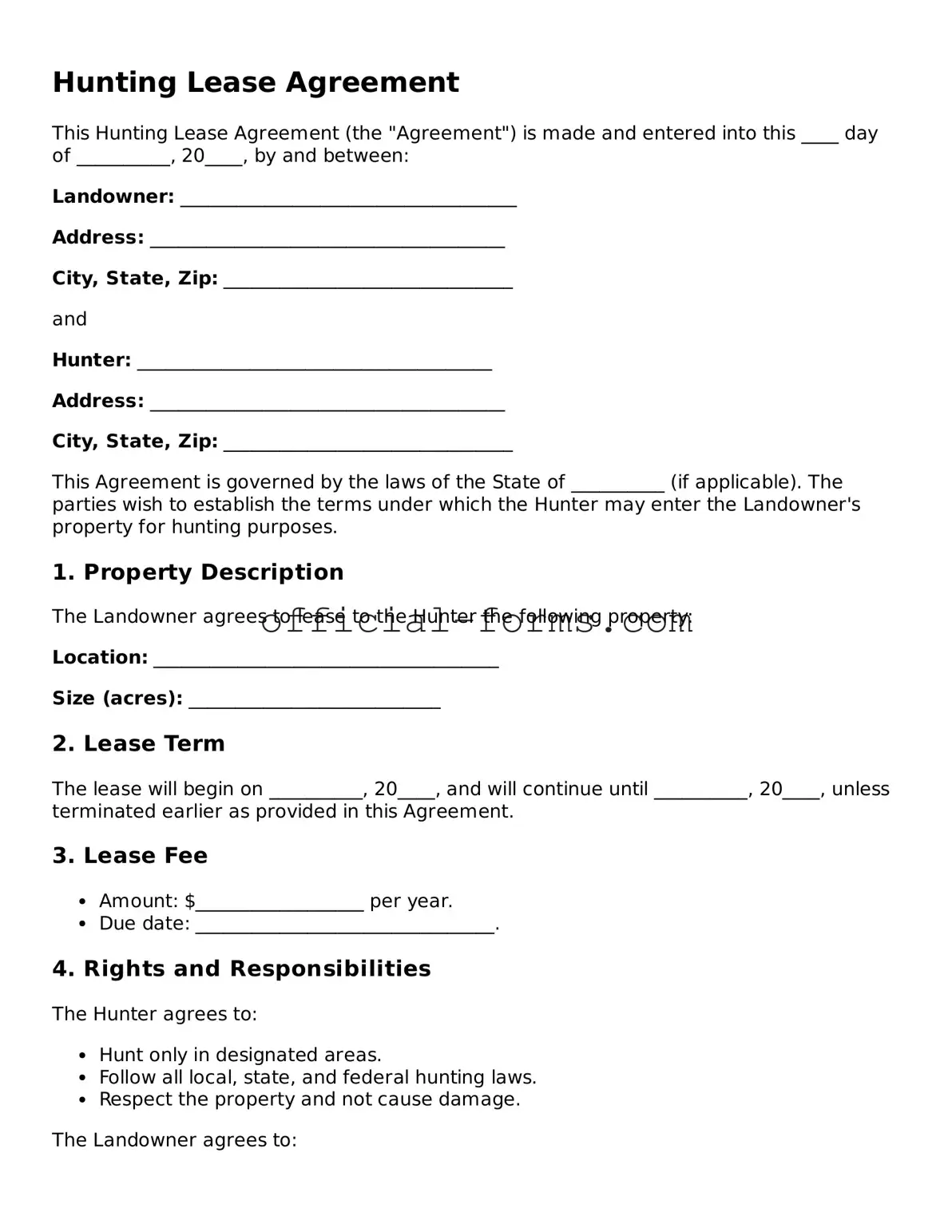Attorney-Verified Hunting Lease Agreement Template
A Hunting Lease Agreement is a legal document that outlines the terms and conditions under which a landowner allows individuals or groups to hunt on their property. This agreement protects the rights of both the landowner and the hunters, ensuring that all parties understand their responsibilities and obligations. By clearly defining the rules, the Hunting Lease Agreement fosters a respectful and safe hunting environment.
Open My Hunting Lease Agreement Now
